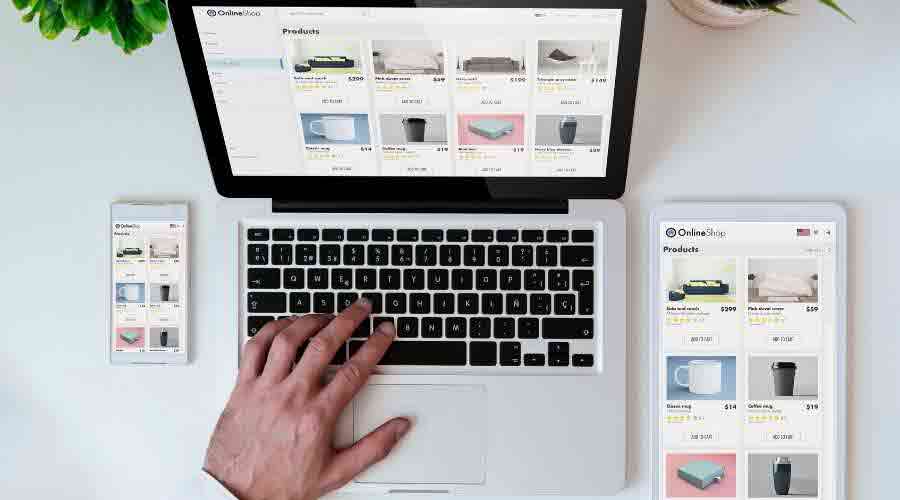Responsive web design (RWD) is a technique that allows your website to adapt to the device it’s being viewed on. Whether you’re using a laptop, tablet, or phone, RWD will optimize for viewing and interaction with any type of device. In this blog post, we’ll be discussing nine best practices that respond to user behavior, so you can apply them to your site.
What is Responsive Web Design?
It is a design methodology where the website responds to different users’ behavior and environment based on screen size, platform, and orientation.
Benefits of A Responsive Web Design
- The user can control what content they view
- User engagement increases, and conversion rates rise
- Less scrolling is required for desktop users
- It creates a better experience with the website, so more people feel satisfied and even returns
- Reduced time spent waiting, data loading, or server error messages
9 Best Web Design Practices that Respond to User Behavior
Users are highly engaged with websites that respond to their needs. There are nine best practices, which will help you create a responsive website.
Improve Typography to Make Text More Readable
Typography is an often overlooked element of design that can make a big difference in how easy it is to read and understand the content. RWD allows you to optimize the size of your text so users with low vision or who are on mobile devices can easily see what’s on-screen without zooming in.
Optimize Layout for All Screen Sizes
Your layout should adapt based on the device view, which means different designs will be necessary depending upon the type of device your site visitors are using.
Vertical scrolling might work well while requiring minimal adjustment if they’re mostly viewing from laptops and desktops. However, horizontal scrolling may be more effective if they’re primarily browsing via smartphones where there isn’t enough room. This also applies to tablet browsing.
Convert Icons & Graphics Into Scalable Vector Graphics (SVG)
Icons and other graphics can be a great way to add visual interest to your site, but they’re often quite large. SVG is a type of image created with code, which means it will scale without losing any quality—no matter what device the user has.
They’ll also load quickly since there aren’t multiple files for each resolution or file size required when using images from different print resolutions (.pngs) versus vector-based (.svgs).
Web Fonts-Inexpensive & Accessible
One of the most significant advantages of using web fonts in a responsive design is that they scale with your site and provide more flexibility in font choices. You can choose from thousands of options for these digital typefaces, which offers an opportunity to add visual interest without sacrificing accessibility or loading speed since most are essentially “web-safe.”
Use CSS Media Queries to Adjust Layouts For Different Screen Sizes
Media queries can be used to adjust how a site is laid out and displayed based upon the screen size of the device it’s being viewed on. Creating custom media queries allows you to control fonts, spacing, image sizes, styles for columns or rows in tables. It will also allow you to control other page elements that typically need adjusting when displaying content across various devices.
Incorporate Large Typefaces To Show Important Content First
When it comes to RWD, one of the best things you can do is make important content stand out in large type. This works exceptionally well for subtitles or body copy when it’s necessary to draw attention away from other parts of a page. However, because this often means sacrificing design elements elsewhere on-screen, be sure your logo and navigation are always clearly visible.
Responsive Images - Show The Same Image At Different Sizes And Resolutions
One of the most difficult challenges for designing a responsive website is how images will be displayed. If you use different image sizes, then some resolution may show up differently on specific screens. At the same time, others won’t appear at all. However, choosing one size and putting in code that resizes or reformats based upon screen size can cause problems with load times and data usage.
One of the biggest mistakes made when it comes to RWD is designing for desktop screens first, then using media queries to adjust based upon device size.This causes issues for mobile users who are often forced to view larger sites on smaller devices where everything is crammed together. It’s best to start on mobile and then scale up; this way, the experience is cleaner, easier to navigate, and less cluttered for everyone.
Simplify Navigation Structure So That All Content Is Easily Located
Navigation is one of the most critical elements in a website. It needs to be laid out correctly for everyone—both desktop users and mobile. With RWD, you’re able to incorporate large buttons and easily clickable links that adjust based upon screen size. However, this isn’t always enough when keeping your navigation structure simple, so all content is easily located and found regardless of device.
Add In-Text Links On Mouseover Or Touch Vs. Hover
One of the most significant changes that come with responsive design is how links are displayed. With a desktop, it’s easiest to hover your mouse over a link and have the cursor change—or you can simply click on it as usual. But when this happens on mobile devices, they either disappear or take up an unnecessary amount of space depending upon screen size. To make sure everyone who visits your site can find what they’re looking for, it’s best to keep in-text links on mouseover or touch vs. hover when it comes time to design a responsive website.
Conclusion
Now that you’re aware of the best practices for responsive web design, take a step back and consider how these nine tips will help your website respond to user behavior today. As more people use their mobile devices instead of desktop computers to browse websites, it’s vital to make sure all parts of your site are visible on any device size.
Your website should adjust itself based on what device is being used without sacrificing functionality or aesthetics. Responsive Web Design is an essential skill in digital marketing strategy as most consumers now search online with a smartphone rather than a computer.





